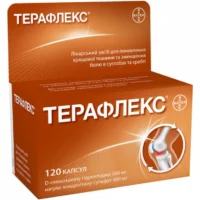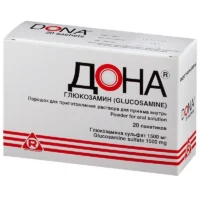Description
Allopurinol (Allopurinol) Tablets 300 mg. №30
Composition
Each tablet contains 300 mg of allopurinol.
Mechanism of Action
Allopurinol works by inhibiting xanthine oxidase, an enzyme involved in the production of uric acid. By reducing uric acid levels in the body, allopurinol helps prevent the formation of urate crystals in joints and tissues, thereby reducing the risk of gout attacks and kidney stone formation.
Pharmacological Properties
Allopurinol is a xanthine oxidase inhibitor that decreases the production of uric acid in the body. It is metabolized to oxypurinol, the active form responsible for the pharmacological effects. Allopurinol is well-absorbed orally and reaches peak plasma concentrations within 1-2 hours after ingestion.
Indications for Use
Allopurinol is indicated for the treatment of gout, hyperuricemia, and certain types of kidney stones. It is also used in conditions where there is an overproduction of uric acid, such as certain enzyme disorders and chemotherapy-induced hyperuricemia.
Contraindications
Allopurinol should not be used in individuals with a known hypersensitivity to allopurinol or any of its components. Additionally, concomitant use of allopurinol with azathioprine or mercaptopurine is contraindicated due to the increased risk of bone marrow suppression.
Side Effects
Common side effects of allopurinol include skin rash, gastrointestinal disturbances, liver function abnormalities, and hypersensitivity reactions. Rare but serious adverse effects may include severe skin reactions like Stevens-Johnson syndrome and toxic epidermal necrolysis. Patients should be monitored for signs of adverse reactions during treatment.
Usage Instructions
The usual recommended dosage of allopurinol is 200-600 mg per day, taken as a single dose after a meal. It is important to swallow the tablet whole with a full glass of water and not to crush or chew it. Dosage adjustments may be necessary based on individual response and renal function.
Benefits Compared to Analogues
Allopurinol is a well-established and cost-effective medication for the management of gout and hyperuricemia. Compared to other urate-lowering agents, allopurinol has a long safety record and is available in generic forms, making it an affordable option for patients requiring chronic uric acid-lowering therapy.
Suitable Patient Groups
Allopurinol can be used in a wide range of patient populations including adults, elderly individuals, and pediatric patients with specific indications. Dosing adjustments may be required in patients with renal impairment to prevent drug accumulation and toxicity.
Storage and Shelf Life
Store allopurinol tablets in a cool, dry place away from moisture and heat. Keep the medication in its original packaging to protect it from light. Check the expiration date on the packaging and do not use expired tablets. Discard unused or expired medication properly according to local regulations.
Packaging Description
Allopurinol tablets are typically packaged in blister packs containing 30 tablets per pack. The packaging is designed to ensure the stability and integrity of the tablets during storage and transportation. Each tablet is individually sealed to maintain its potency until the time of use.
Clinical Evidence and Proven Effectiveness
Allopurinol has been extensively studied in clinical trials and real-world settings, demonstrating its efficacy in reducing serum uric acid levels and preventing gout attacks. Long-term use of allopurinol has been associated with a decreased frequency of gout flares and improved quality of life in patients with chronic hyperuricemia.





